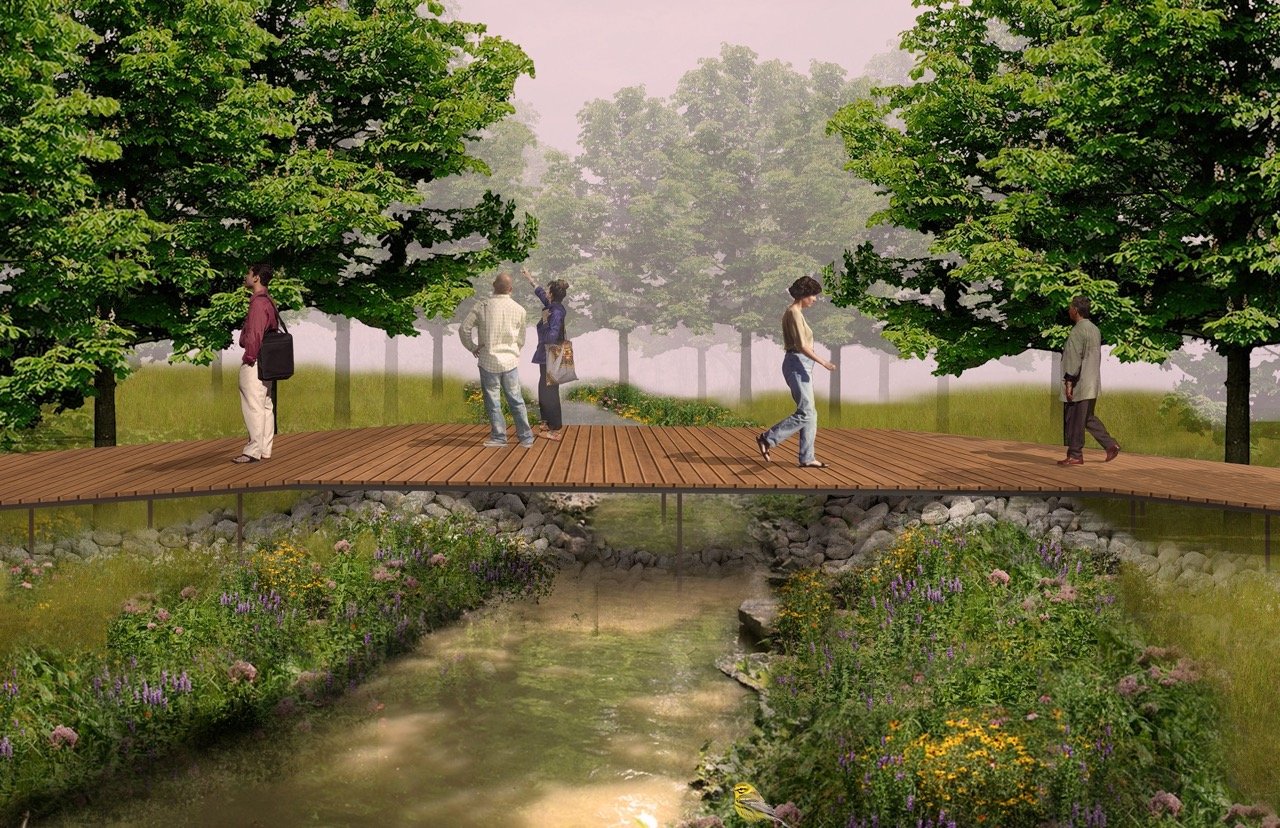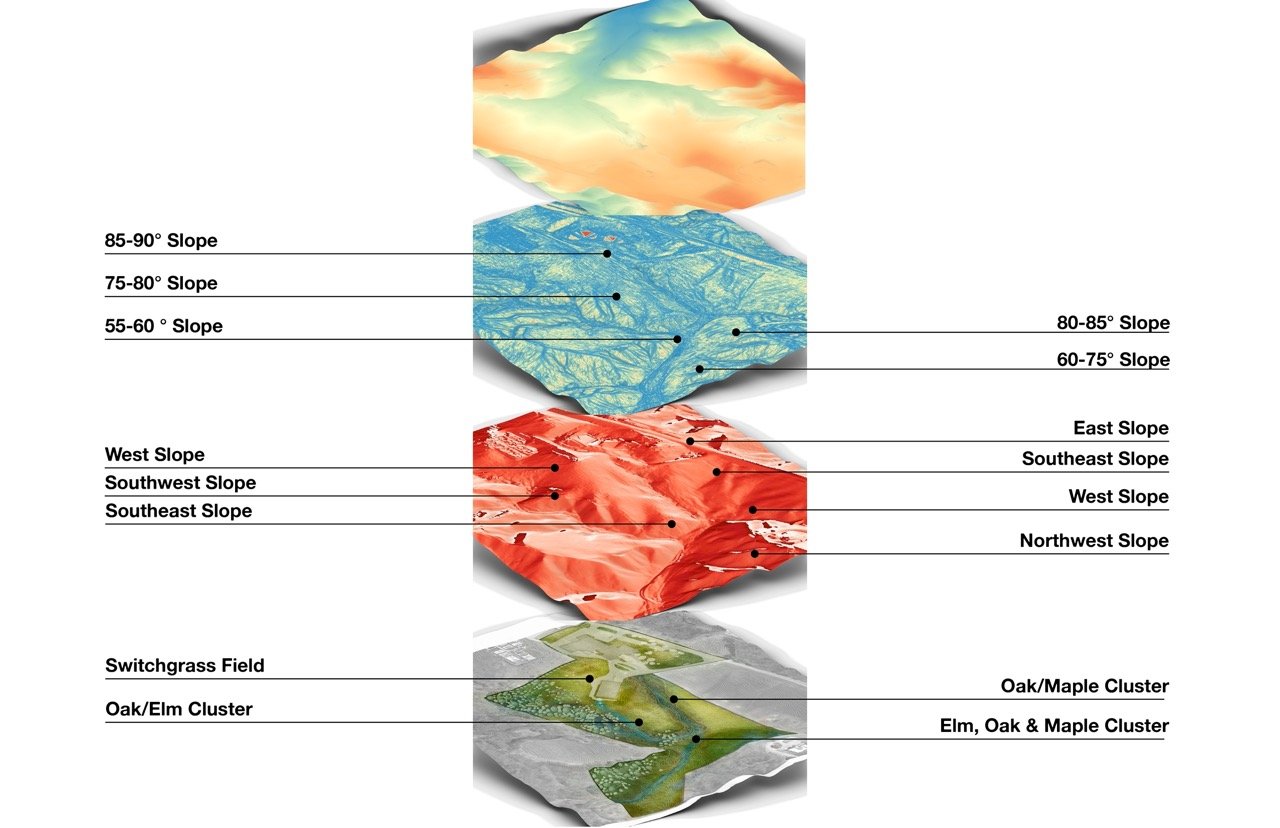Northern Distillery ECOLOGICAL PLAN
Traverse City, Michigan





BLD’s efforts for this large-scale distillery destination included a 40-acre ecological and landscape plan that integrated a variety of unique programming opportunities with ecological improvements. Working alongside Mathison Architects, an ecological masterplan was produced with the intent of creating a beautiful, functional landscape that at once serves the distillery, an ambitious hospitality program, up to several hundred guests, and the native ecologies of this region.
A major component of the ecological plan is the utilization and refinement of site topography to convey, detain, and polish stormwater runoff from across the site via green stormwater infrastructure, or GSI. Site runoff would be collected into an existing ravine through a series of terraced detention ponds, crisscrossed by a series of pedestrian bridges and seating. From there, the stormwater would flow into a larger pond that serves as the centerpiece of a planned camping/overnight retreat area. In addition to responsibly managing the site’s stormwater, the highly visible utilization of GSI throughout the site emphasizes the distillery’s connection to the local water cycle, as local groundwater resources are utilized in their manufacturing process.
Other programs are built into the ecological plan in order to provide a diverse array of year-round amenities for short and long-term visitors, including a number of outdoor “rooms” for gathering and socializing at a variety of scales, public art, sledding hills, fruit orchards, and outdoor service areas, including a private tasting area. ADA access is also provided throughout the entire site.
Finally, the ecological plan proposed the use of local materials and native plant species to minimize the project’s carbon footprint and maximize carbon sequestration. Gabion walls throughout the site utilize local glacial cobbles to delineate different site programs and guide site circulation. Judicious planting of large trees—specifically a hybridized, disease-resistant cultivar of the native American Chestnut tree—will improve the site’s habitat while also absorbing airborne carbon dioxide over time. BLD's multi-layered, environmentally conscious approach allows for the development of an innovative and resilient landscape that shows “northern hospitality” to both guests and local ecologies.
